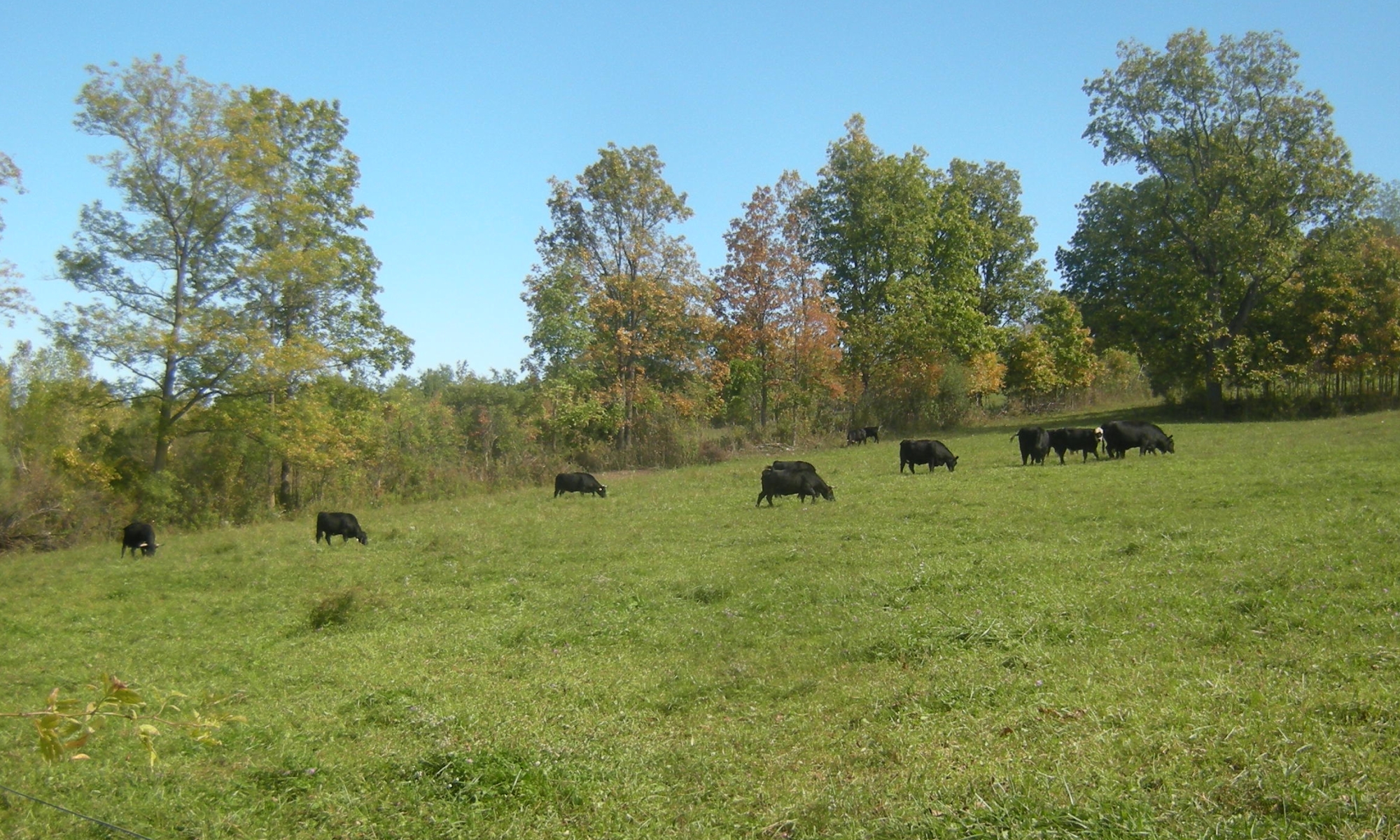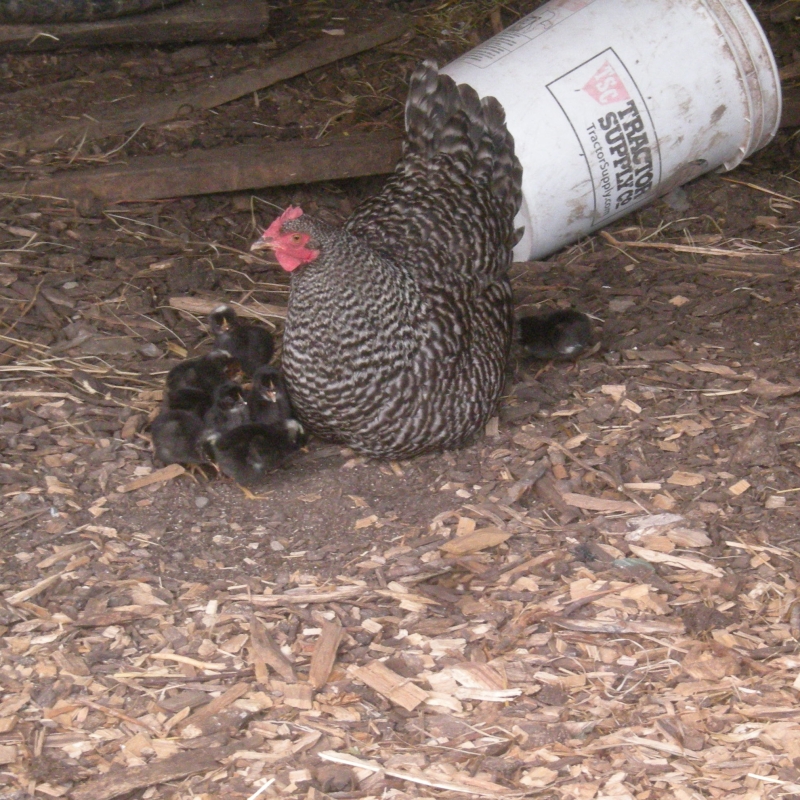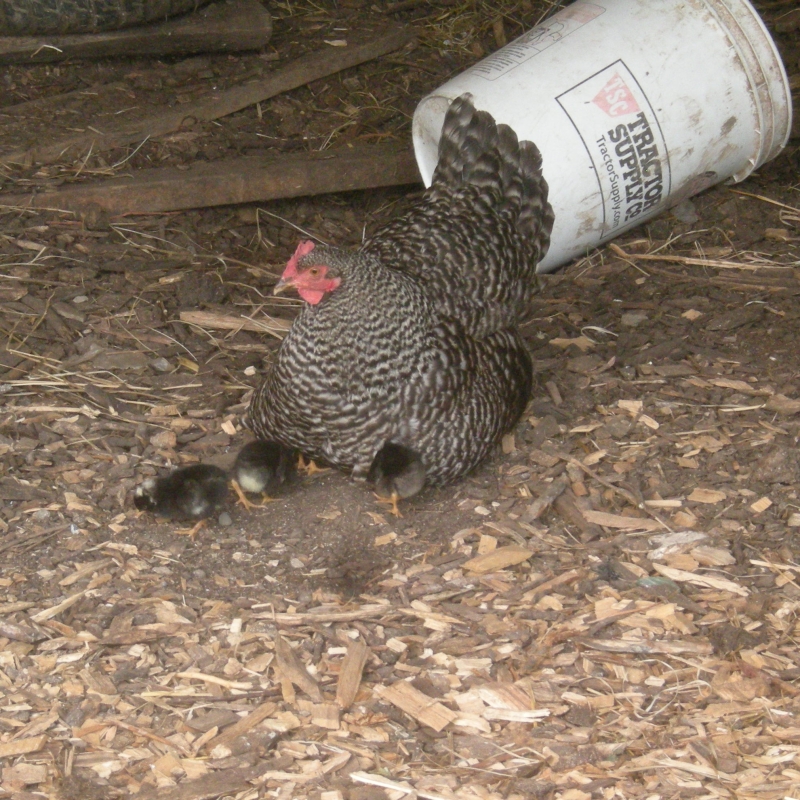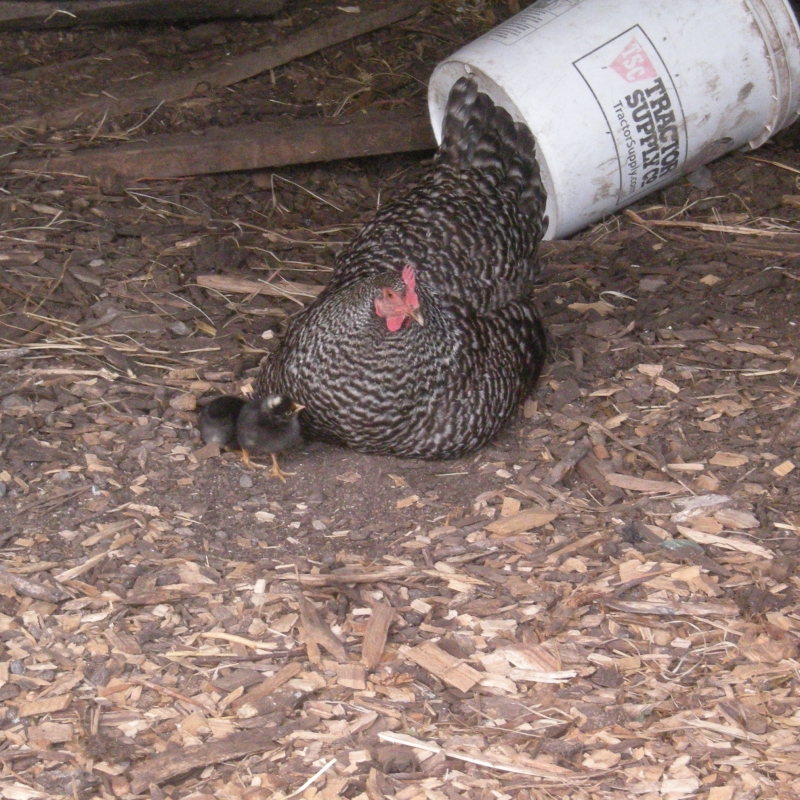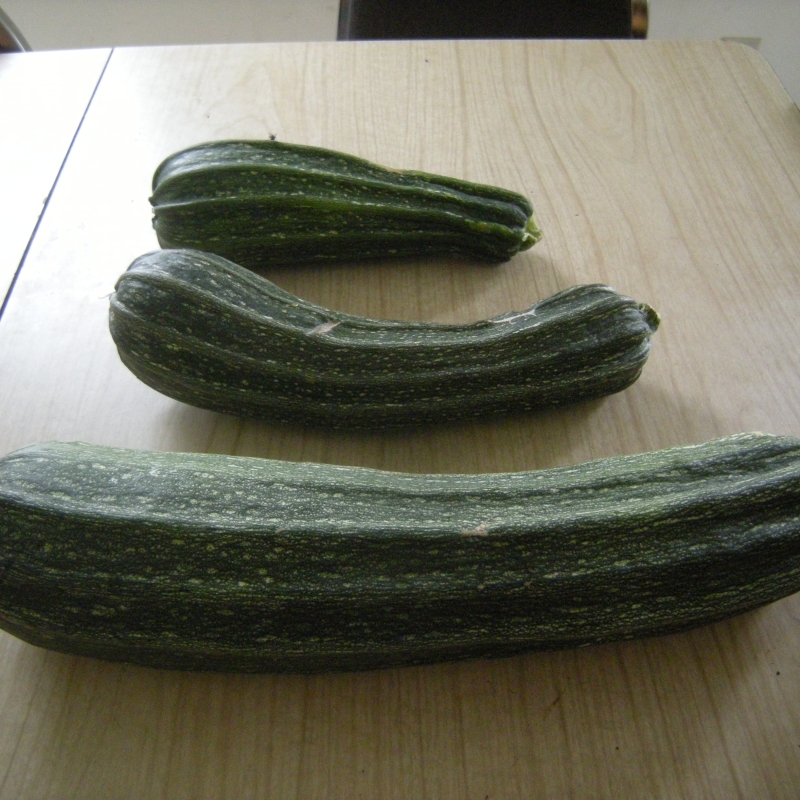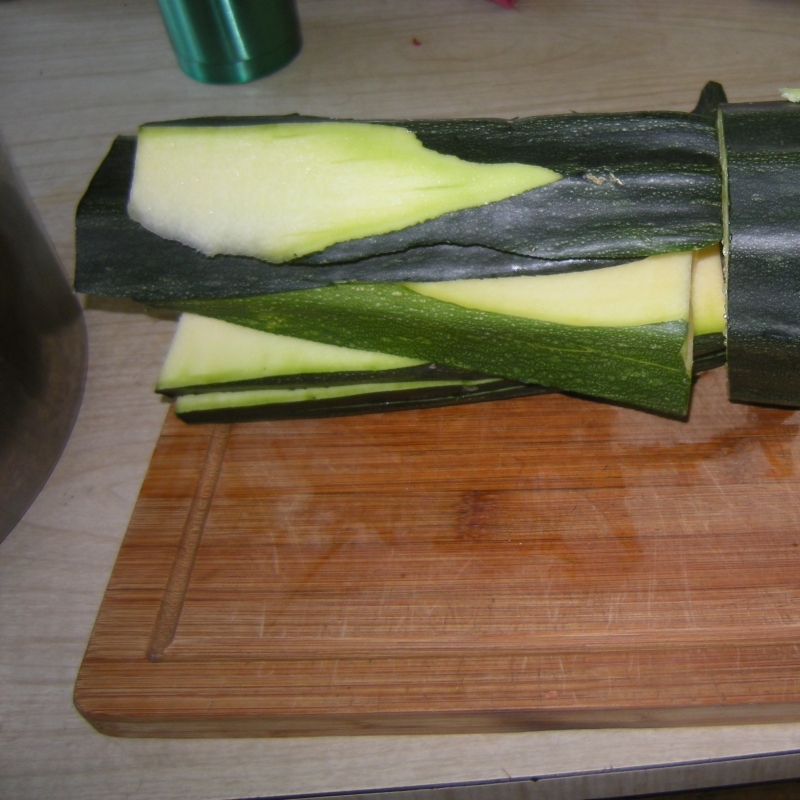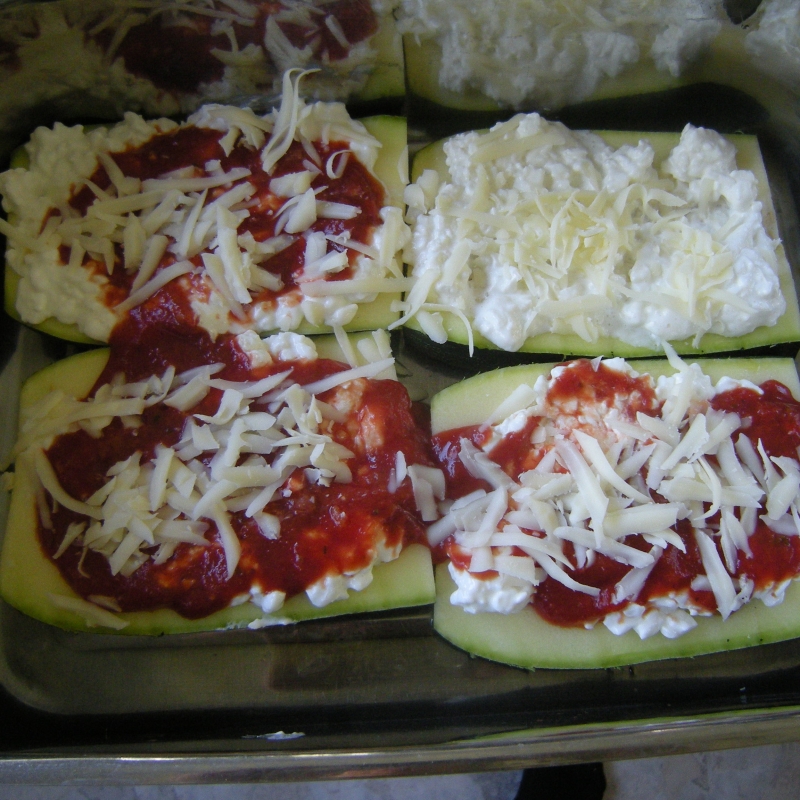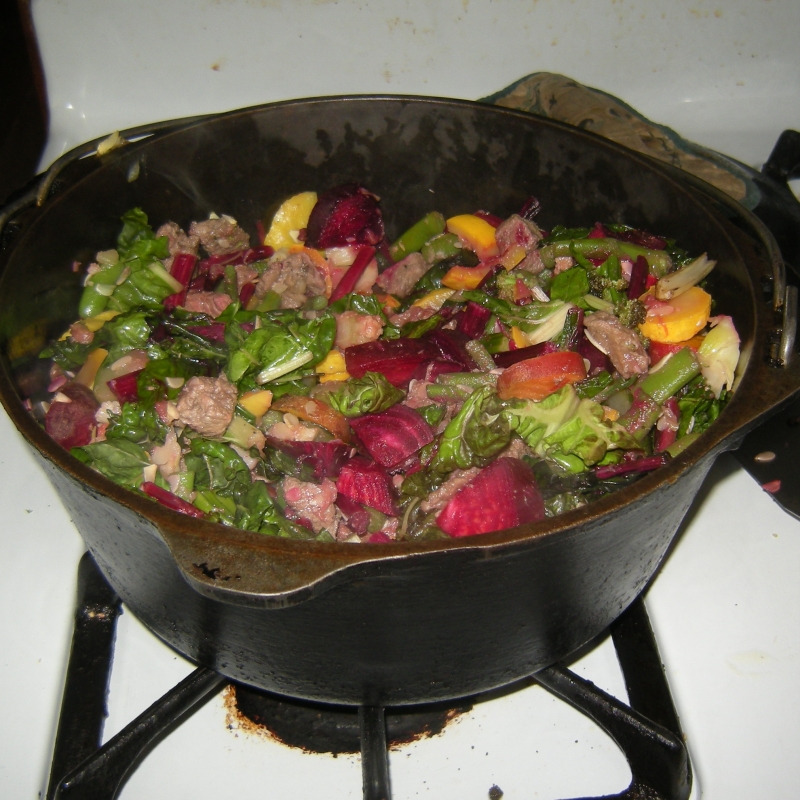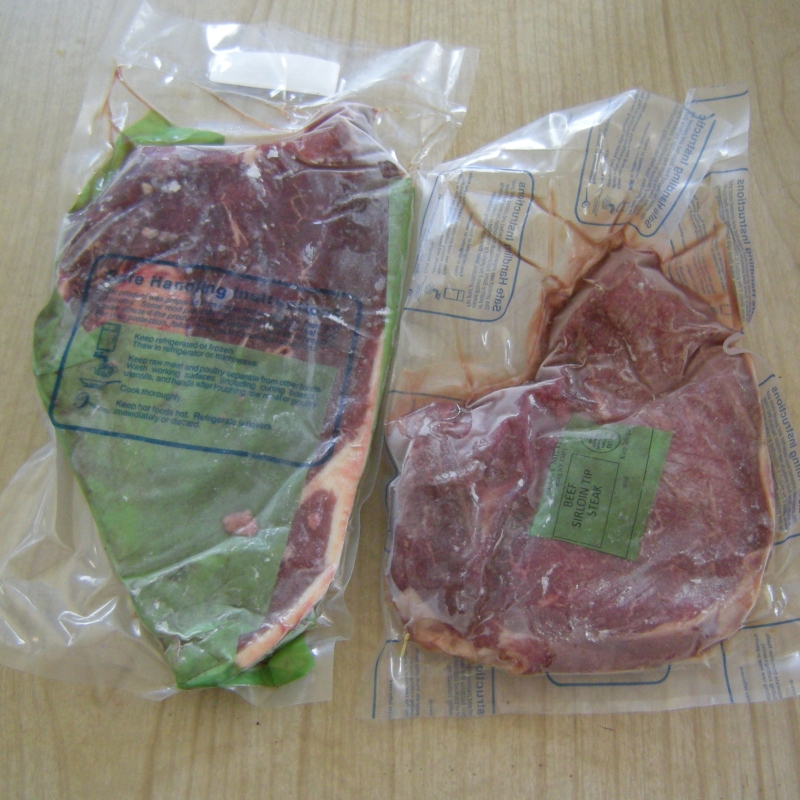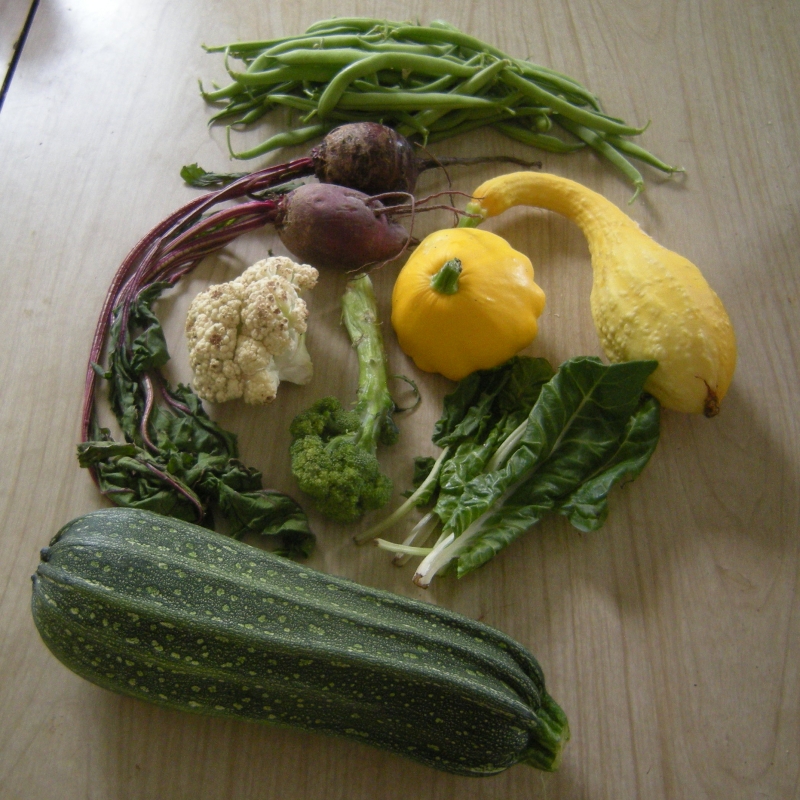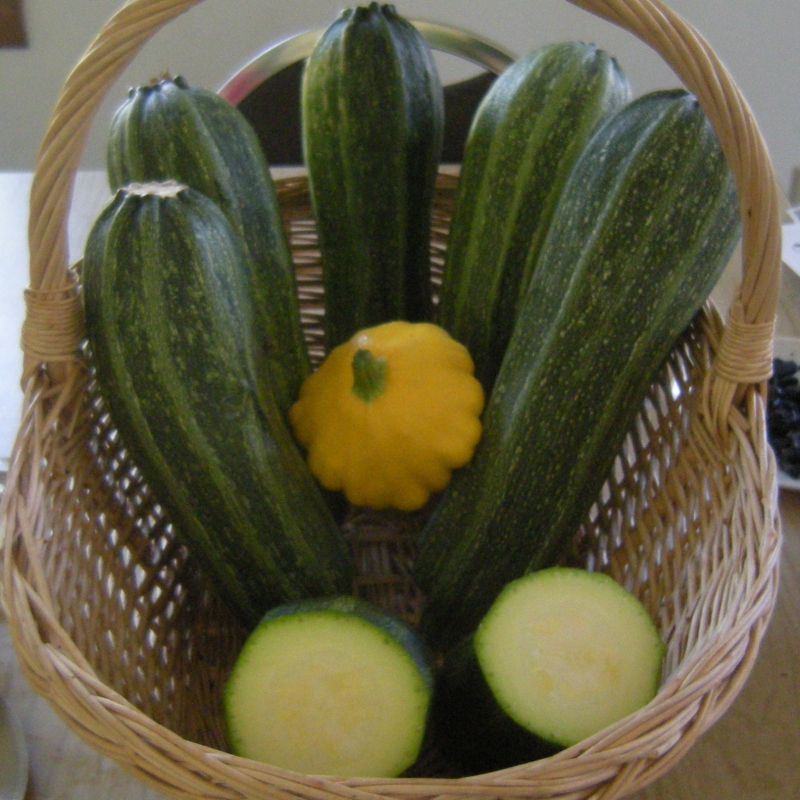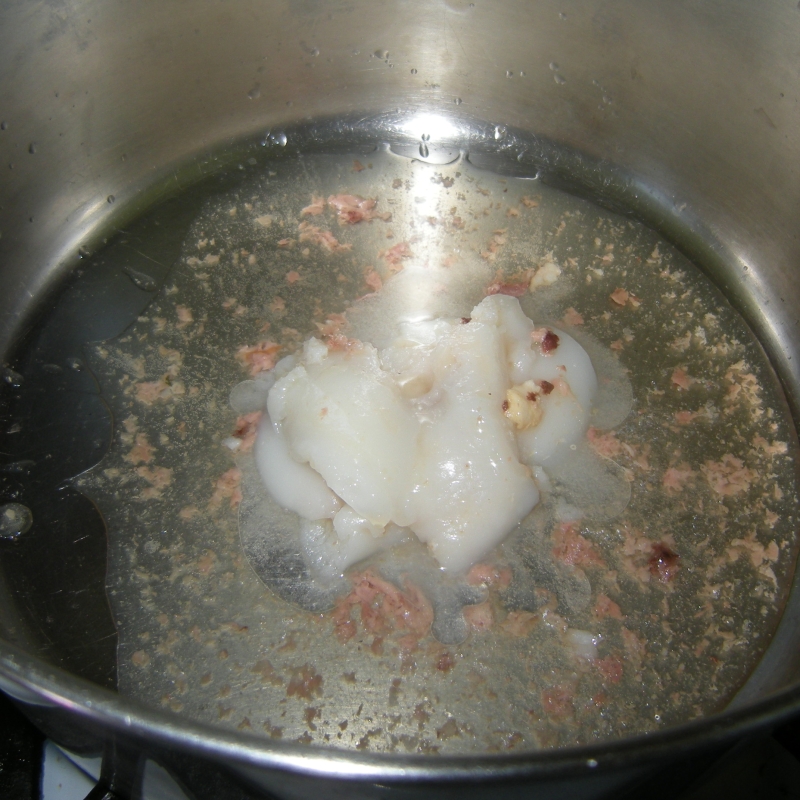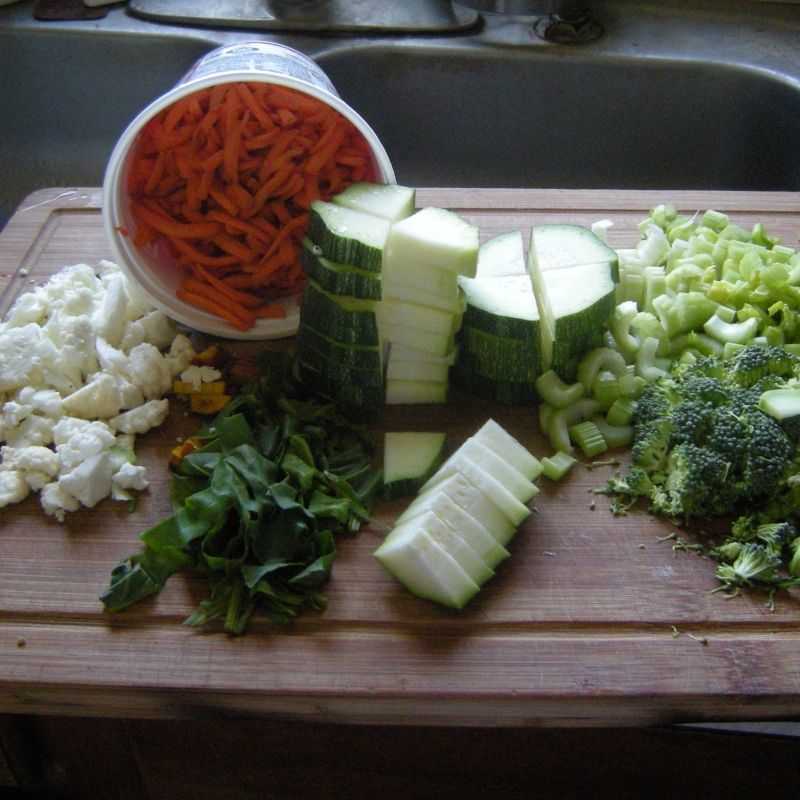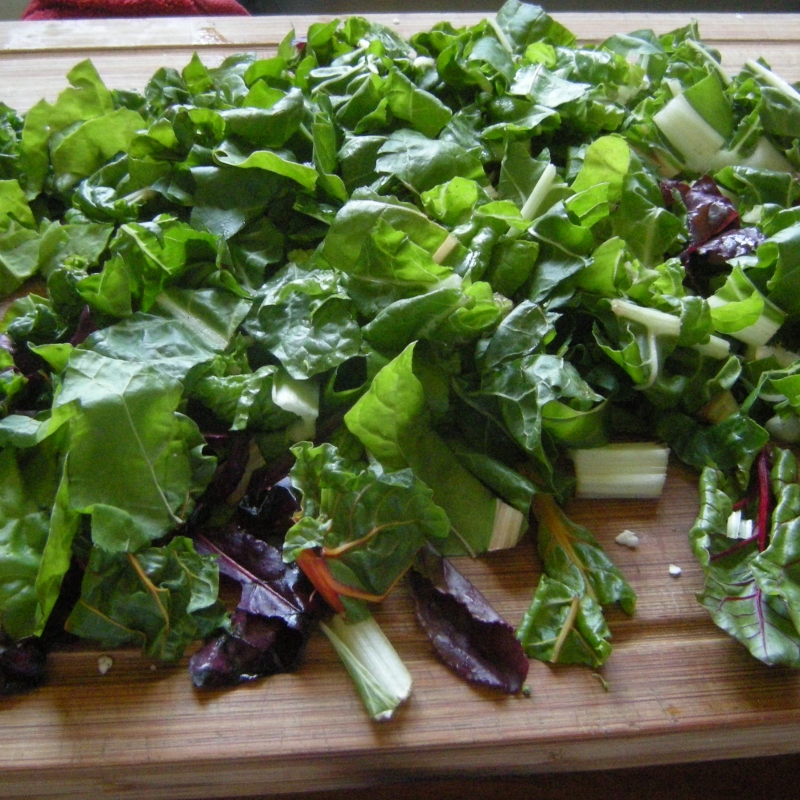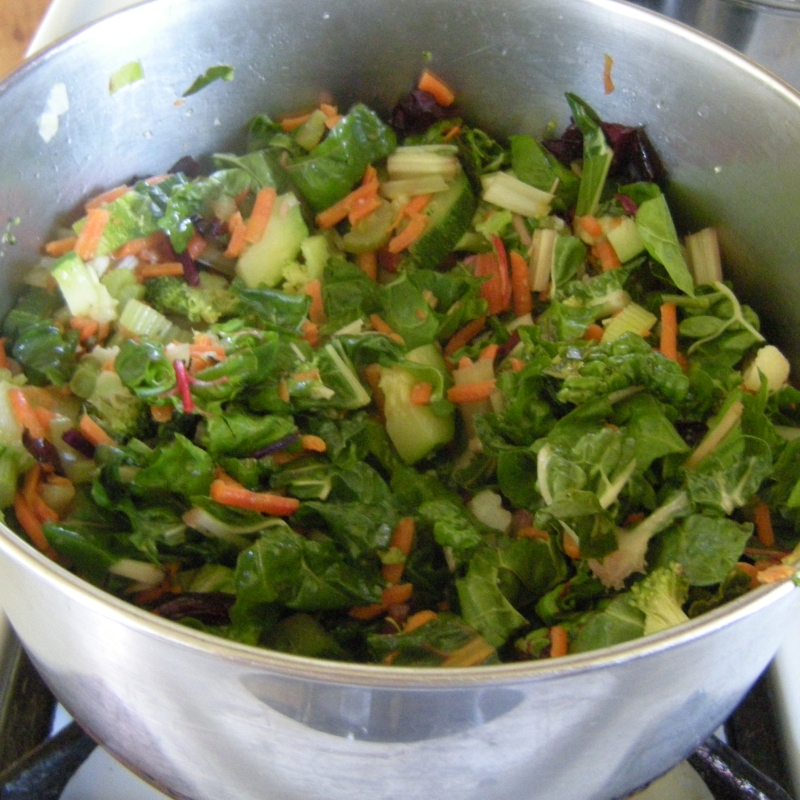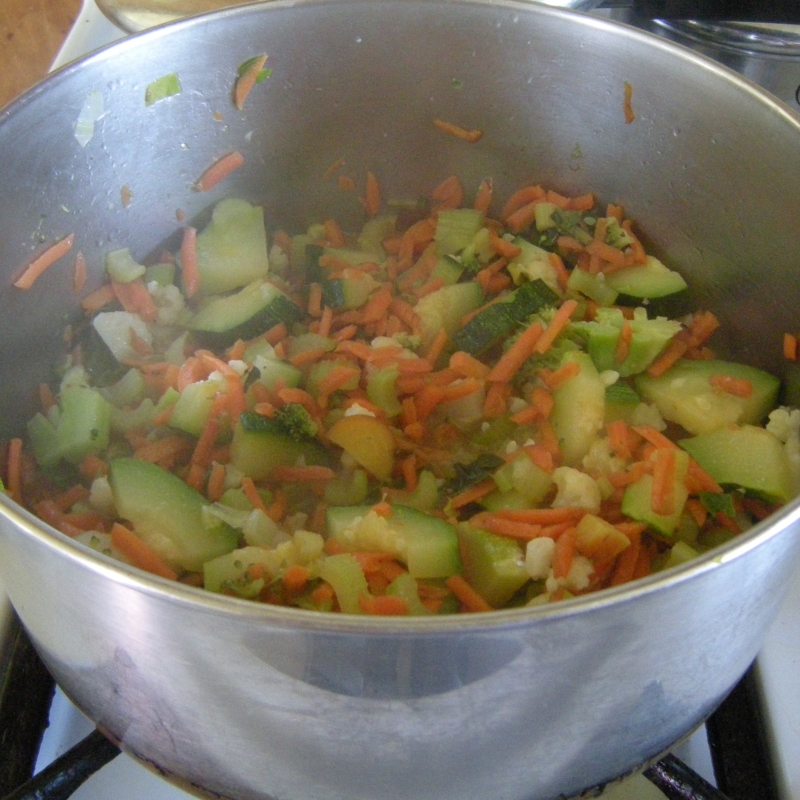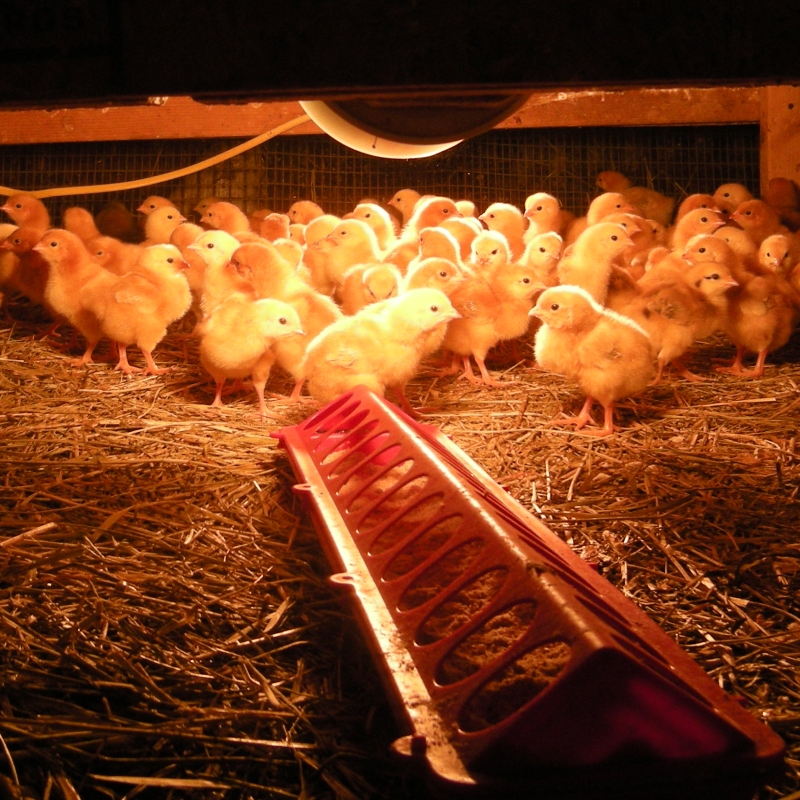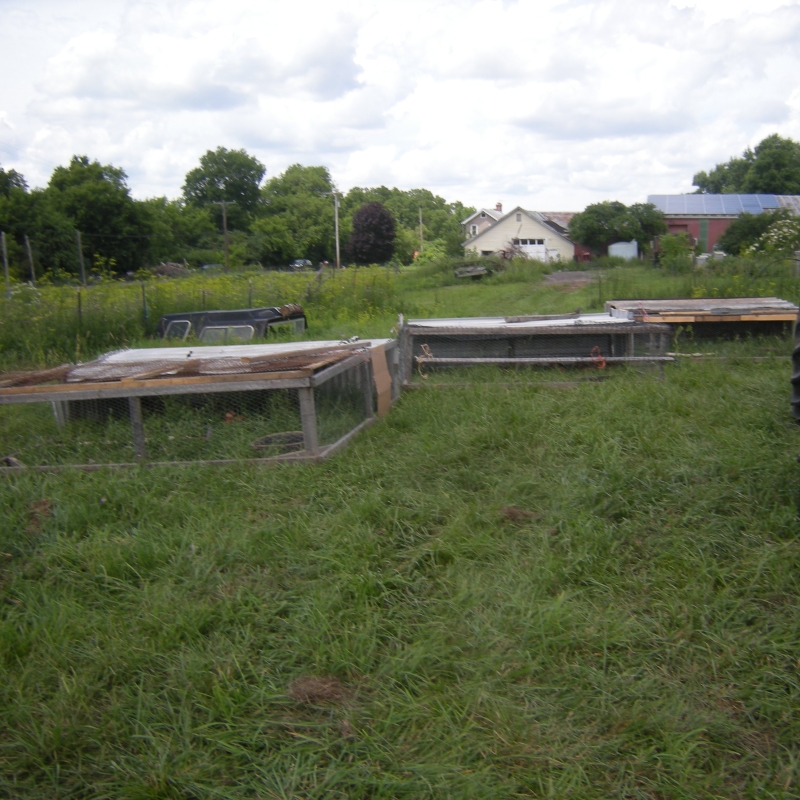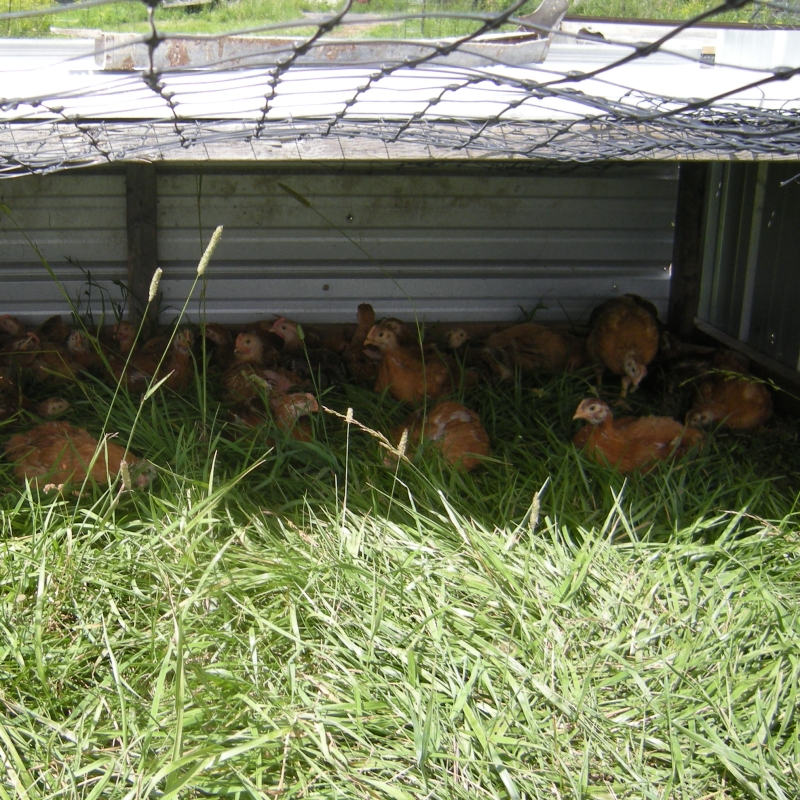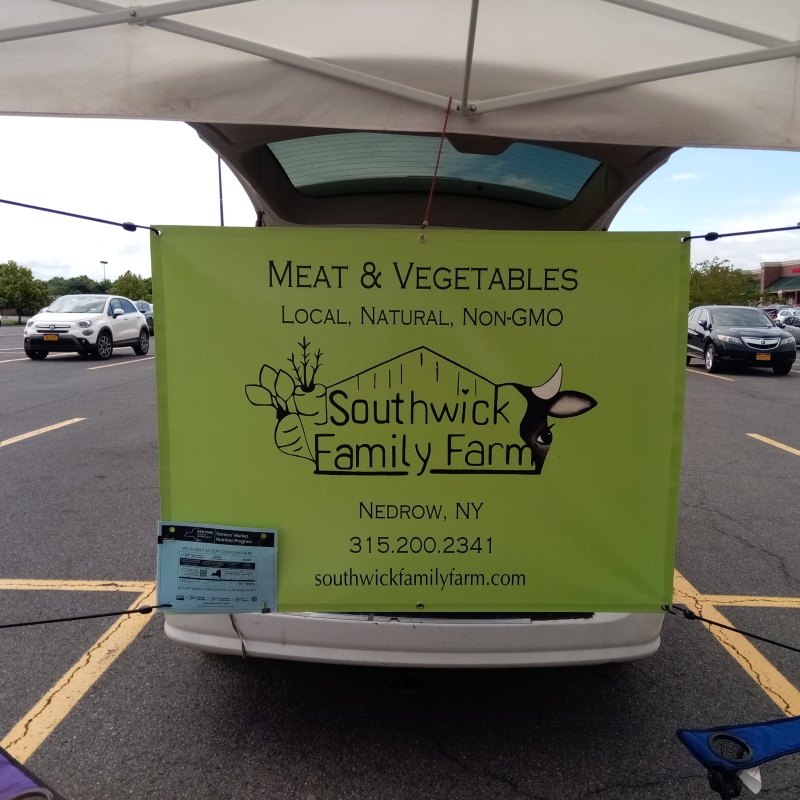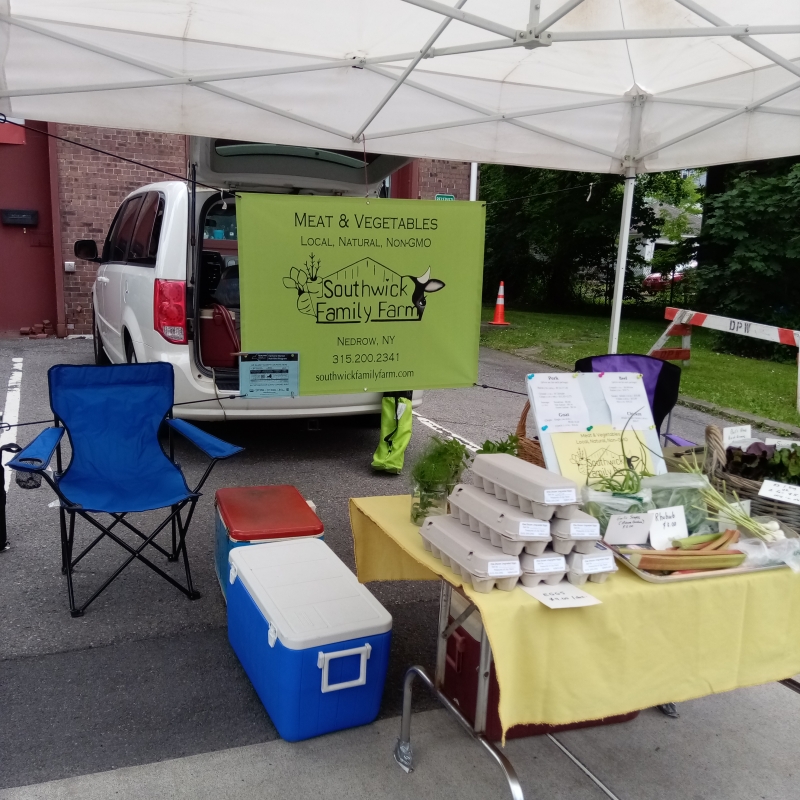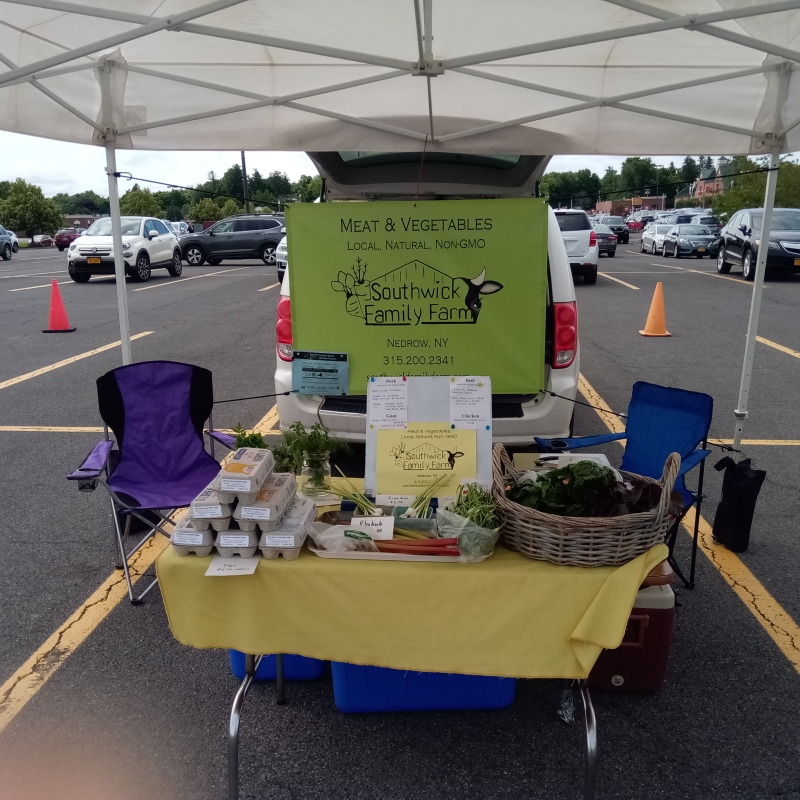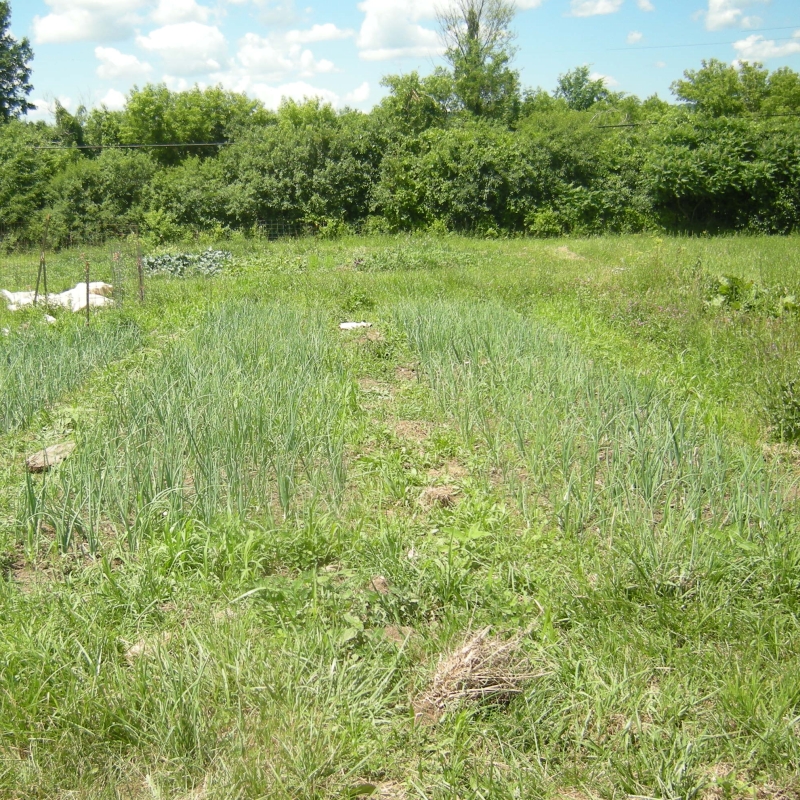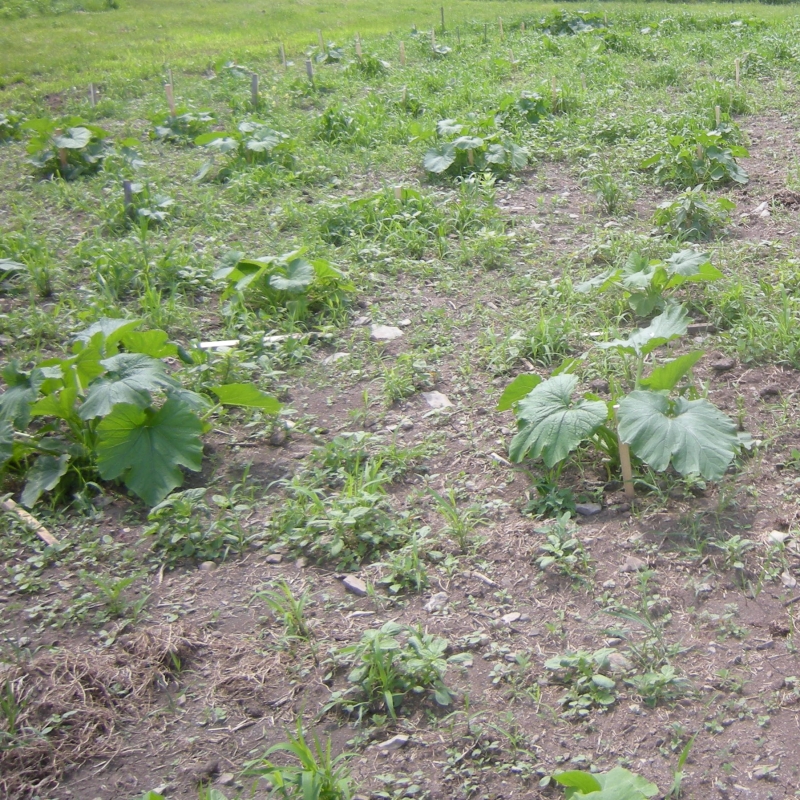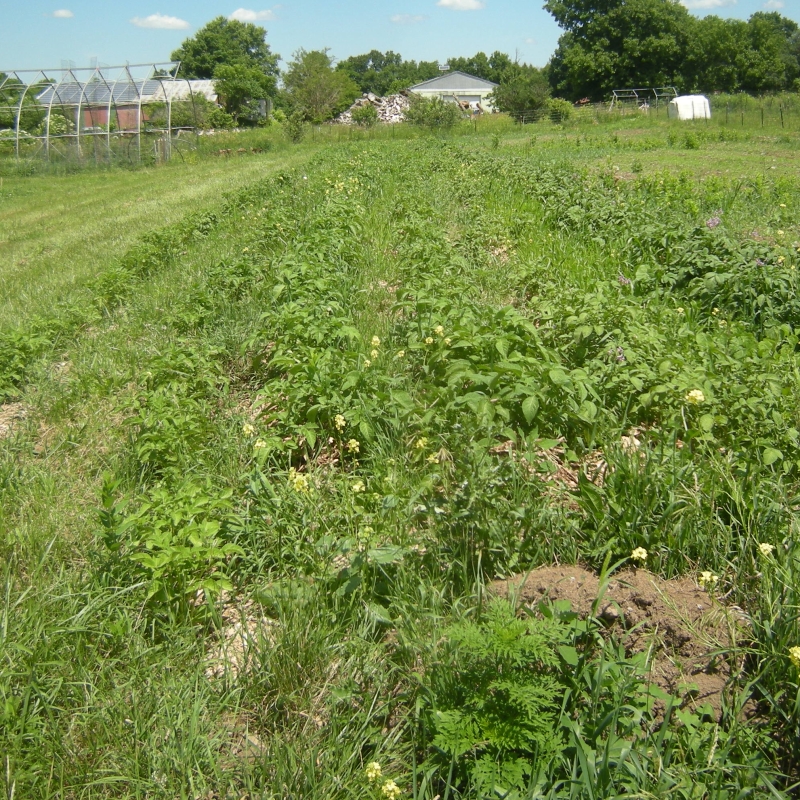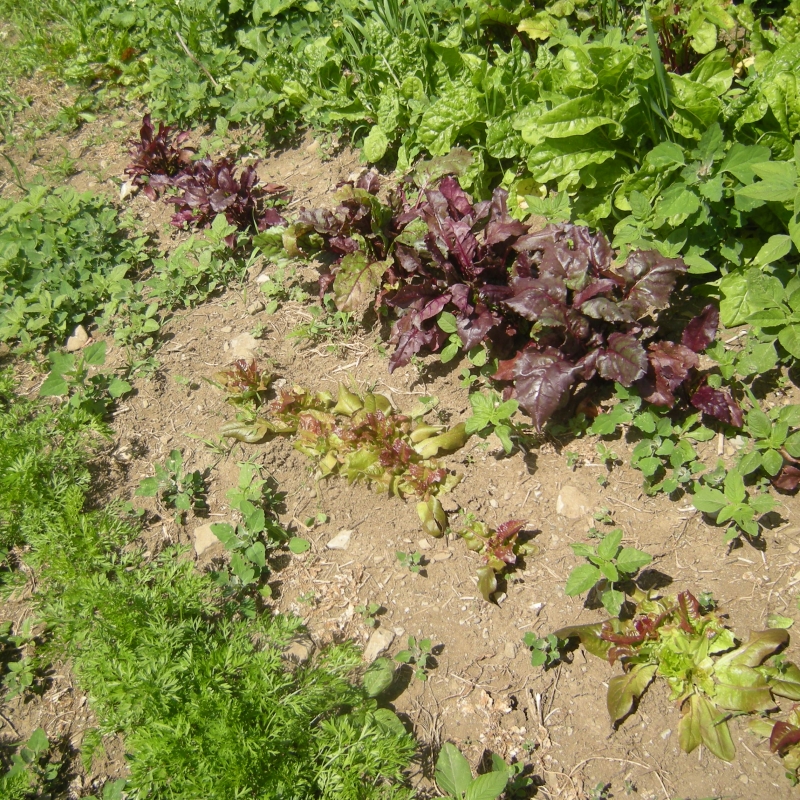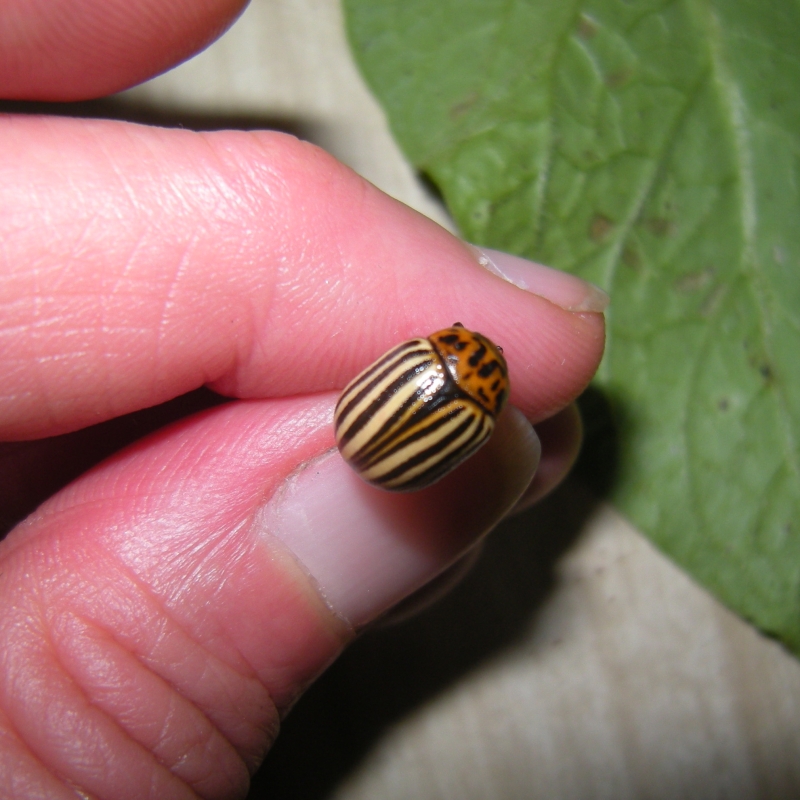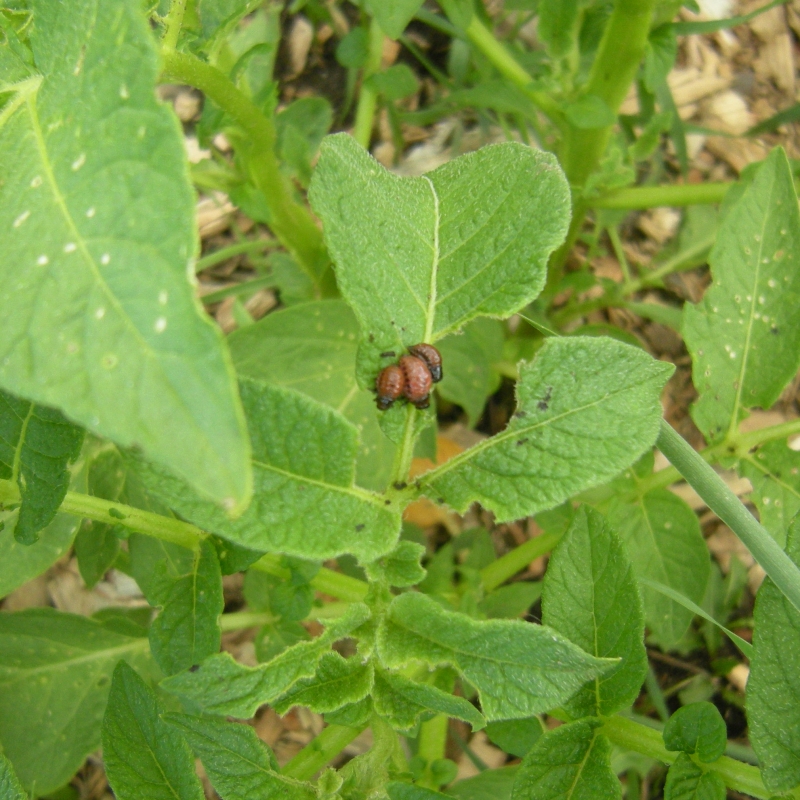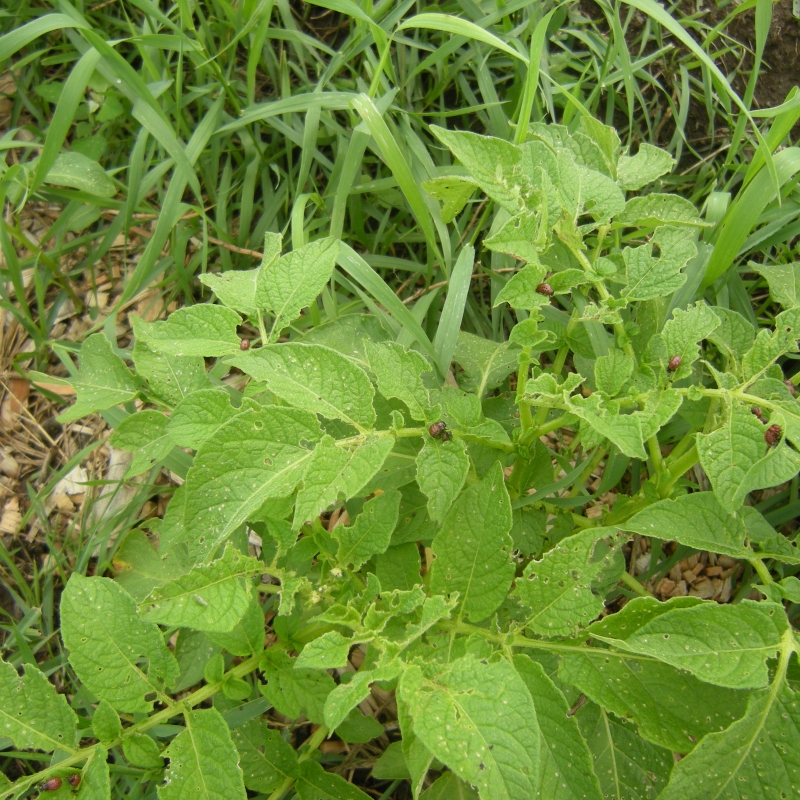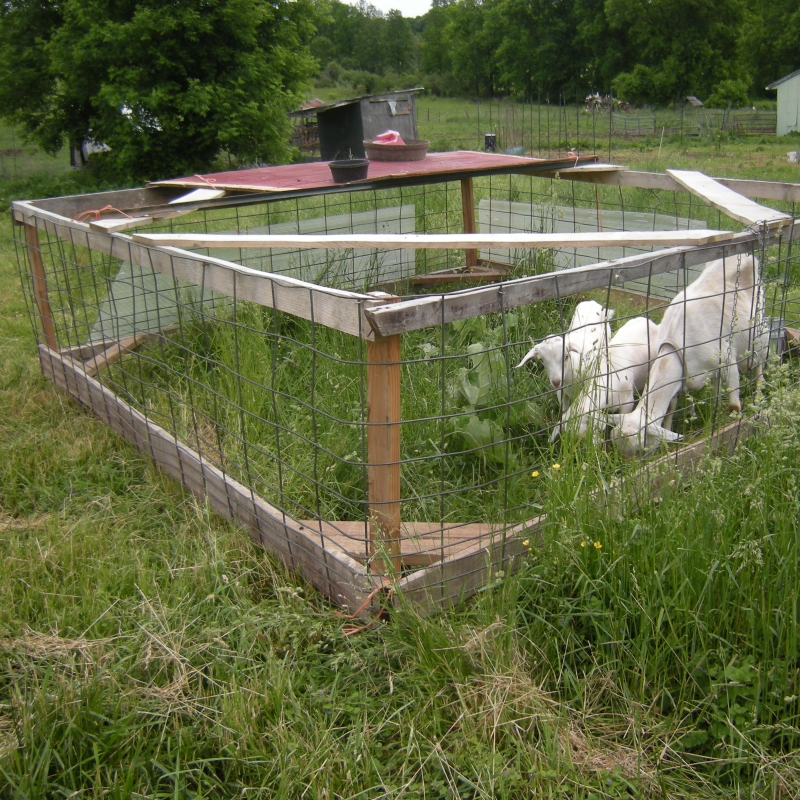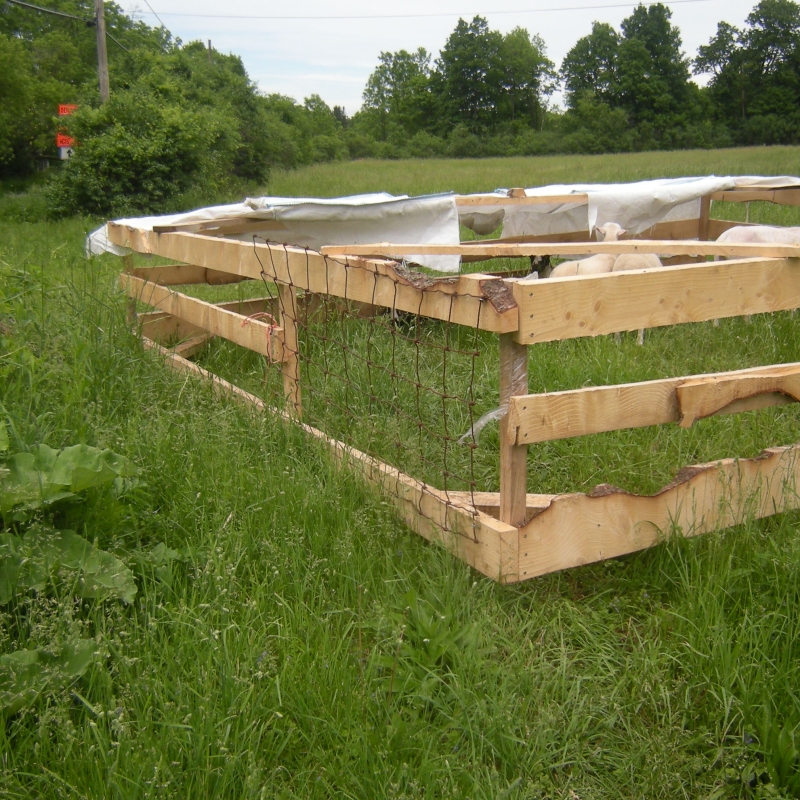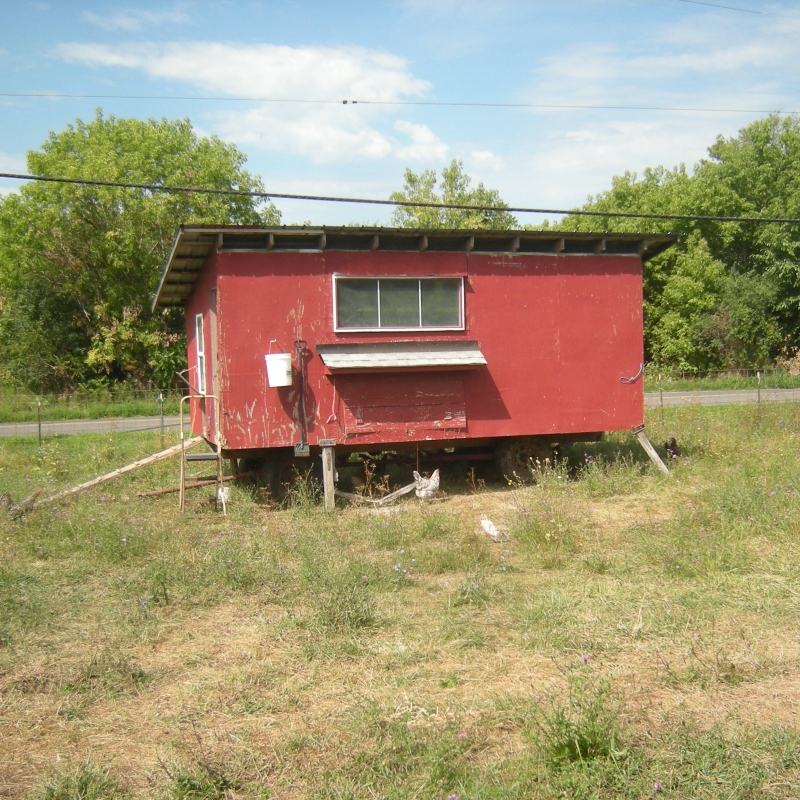
Most of our hens hang out under the Taj Mahal. They have food and water and grass to scratch. On the side under the windows are nest boxes they get to from inside their house. They lay their eggs and then got outside and lounge and scratch.
The family told me that a broody hen hatched some chicks over the weekend. She found a corner of the barn to lay her eggs and then sat on them for 21 days until they hatched.
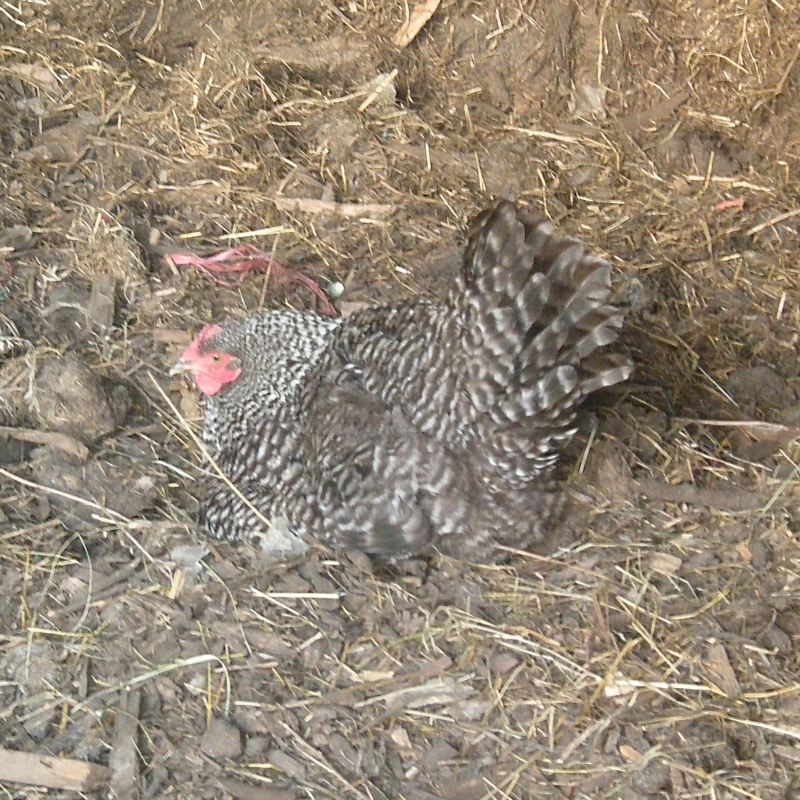
I found mama hen this morning with her back feathers ruffled a bit because she didn’t want me (or the cat) bothering her. But no view of the chicks.
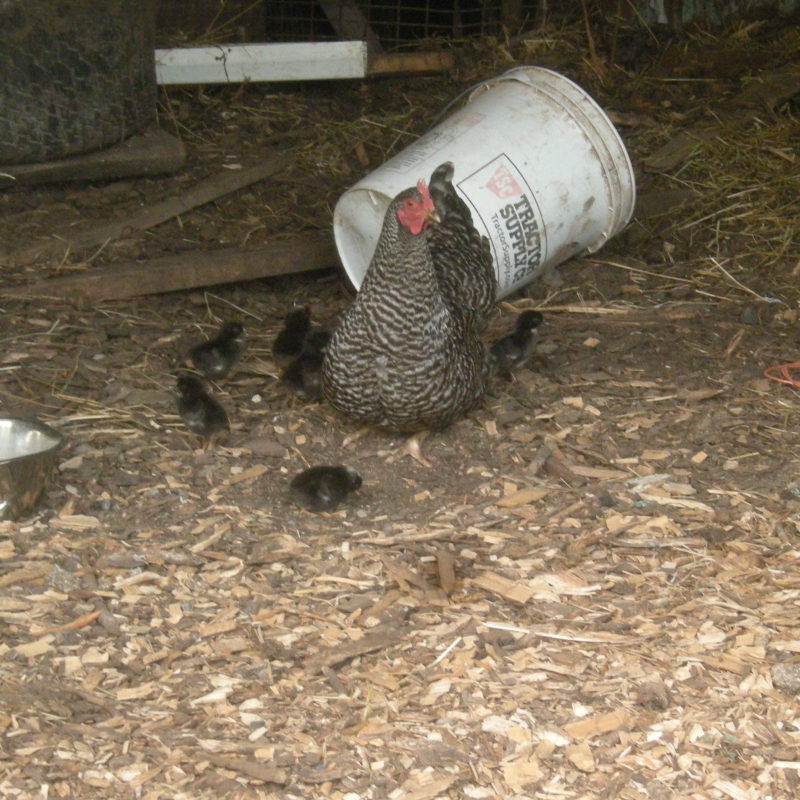
When I went out a few hours later, seven chicks were scratching and pecking just like mama hen was. Chicks hatch able to walk and scratch. They have some feathers, but not enough to keep them warm, so they need a heat lamp or a mama hen.
As I watched the chicks went under mom until finally all of them were warming up again. Fun to watch!
Then I went off to find the father. We only have 1 mature rooster right now so it wasn’t hard to figure out who he was.
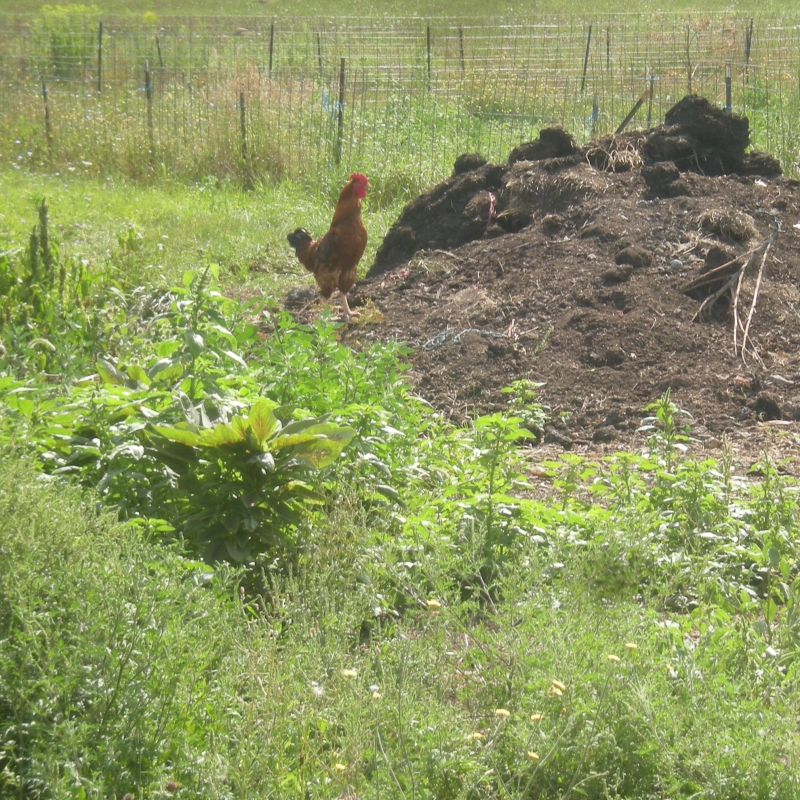
Pretty papa who didn’t want to pose!
